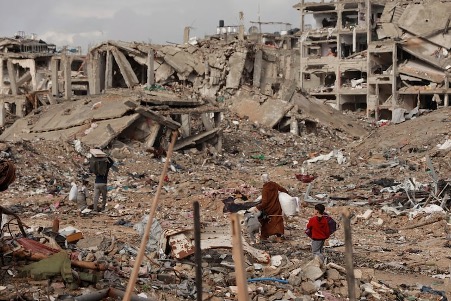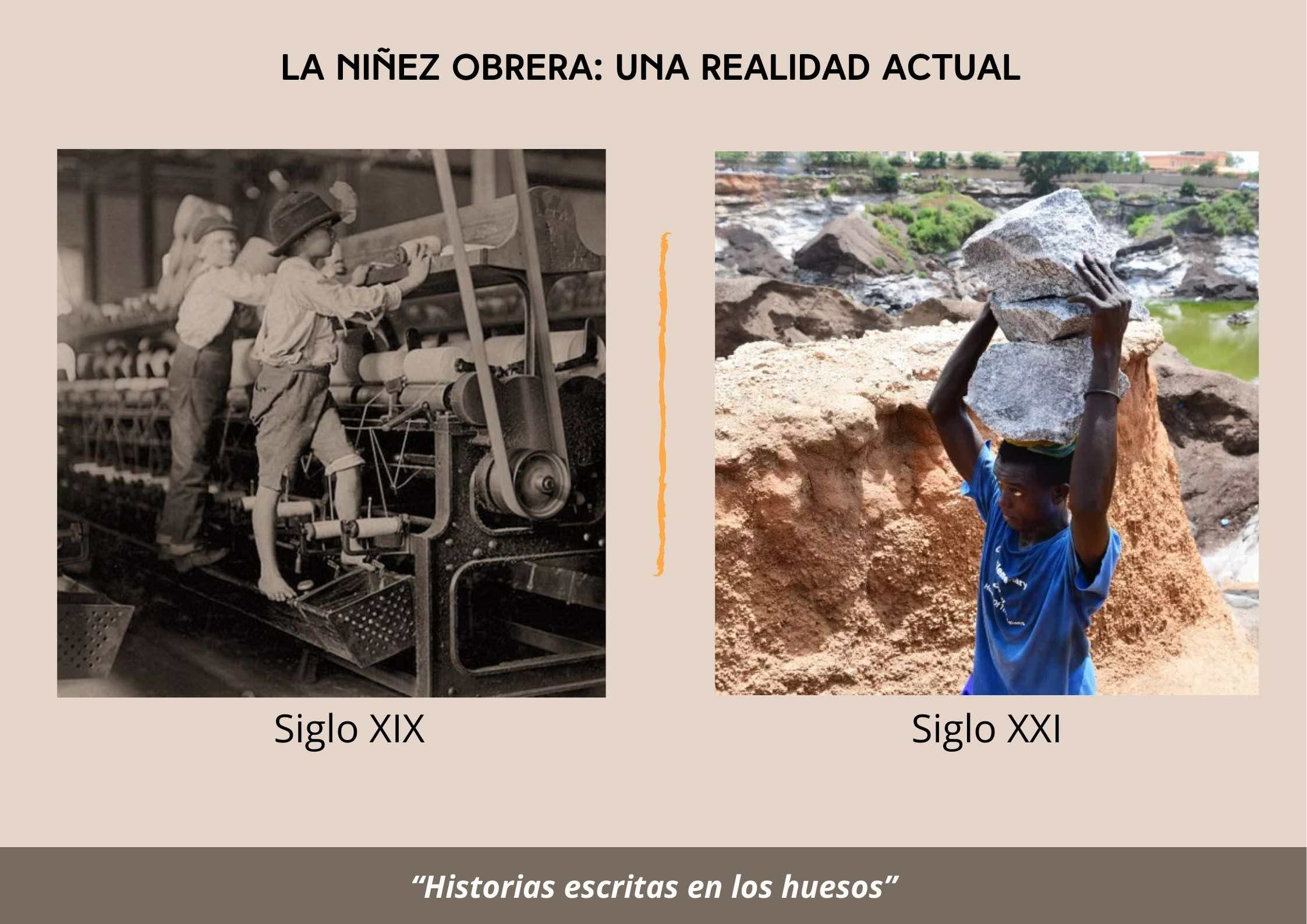
Norma Reyes – February 2025
The ceasefire in Gaza, which took effect on January 19, 2025, was welcomed by its people as a source of relief after more than a year of enduring relentless attacks by Israel. Under the pretext of self-defense following the Hamas attack, Israel has carried out what is widely regarded as the most severe act of ethnic cleansing in Palestine since the Nakba of 1948.
For Gazans, this moment of respite is bittersweet. Despite the immense suffering they have endured, the announcement of a ceasefire brought a sense of relief. Palestinian journalist Eman Alhaj Ali captured these mixed emotions:
There were shouts of joy around me, but I could not shake off a deep heaviness. I went out and walked. The physical and psychological devastation was overwhelming. From our shelters, we imagined it, but seeing it now—walking through familiar places we barely recognize because they are destroyed—was devastating. Relief ran through the streets, but the faces reflected the collective trauma of Gazans: people were crying, mourning their own losses and those of others. Some searched desperately for loved ones, while others wandered aimlessly, their eyes empty. Our collective scars are immeasurable.
Despite Israel’s continued efforts to erase the Palestinian people from their land, Gazans remain determined to rise from the ruins. Their resilience stands as a testament to resistance for oppressed peoples worldwide. As Alhaj Ali further describes in her article, The Truce in Gaza in First Person:
As the hours pass, I am more convinced that we are facing a new beginning. We are overwhelmed by pain, loss, and anger. It is clear that healing will take time and that reconstruction will be a challenge, but we must find within ourselves the will to continue—not only to rebuild our homes but also to restore the foundations of our lives.
We are not just a group of survivors but a community—united in suffering, in hope, and in the determination to stand on our feet once more.
This enduring spirit has been passed down through generations. However, the success of their national liberation struggle depends on the ultimate defeat of Zionism. The ceasefire does not provide a fundamental solution to the conflict, as Israel remains committed to emptying Gaza and the West Bank of Palestinians to seize more land and expand settlements. The ethnic cleansing that has taken place in Gaza since October 2023 serves this objective.
The severity of the situation has been widely recognized, including in a report by Human Rights Watch (HRW) titled ‘Hopeless, Hungry, and Besieged: The Forced Displacement of Palestinians in Gaza by Israel’ (November 2024). The report states:
And we see it now with what is happening in Jabalia, and there have been reports of senior Israeli officials who have stated very clearly that there will be no return to northern Gaza. So these fears regarding permanent deportation and permanent depopulation are extremely well-founded and have a historical basis.Israel may be carrying out a selective campaign of ethnic cleansing in these so-called ‘buffer zones’—as well as in the 4-kilometer-wide ‘Netzarim Corridor’ that Israel has carved through the center of the Strip and the ‘Philadelphi Corridor,’ which runs along the border with Egypt.
This means that Israel has no intention of allowing Palestinians to return to their territories, and the so-called ‘buffer zones’ are key areas where Zionism has implemented its ethnic cleansing plans since the beginning of the attacks on Gaza.
Nadia Hardman, the lead author of the HRW report, clarifies the concept of ethnic cleansing:
It is very clear that in those areas where people have been forced to leave, they will not be allowed to return. This also meets another definition used in international law, even though it lacks an official legal definition, and it is known as ethnic cleansing.
Furthermore, the report confirms Israel’s objective of preventing Palestinians from returning to their lands:
The massive destruction of Gaza aims to make the territory uninhabitable and, in doing so, force Gazans to migrate elsewhere if they wish to survive once open combat has ceased.
Israeli military officials have stated that no one will ever be allowed to return there, that there is no intention of permitting people to re-enter the area, and there are suggestions that it will be designated for Jewish settlement. This represents the most explicit attempt at permanent ethnic cleansing and the lasting expulsion of the population from that territory.
It is paradoxical that, in the context of this new ethnic cleansing carried out by Zionism, at the ceremony marking the 80th anniversary of the liberation of Auschwitz on January 27, it denounced the ‘great increase’ in global antisemitism, comparing Hamas’s October 2023 attack to the horrors suffered by detainees in that concentration camp. With their characteristic cynicism, they once again use the argument of ‘antisemitism’ to portray themselves as victims and justify the genocide in Gaza.
This confirms that, far from achieving a definitive solution with the current truce, Israel’s offensive—backed militarily, economically, and politically by its imperialist allies, the U.S. and Europe—will continue to pose a threat to the Palestinian people.
This is evidenced by the order given by Benjamin Netanyahu on January 25, just six days after the truce, to suspend the return of Palestinian residents to northern Gaza, from where they had been displaced by the Zionist army.
Furthermore, in the days following the ceasefire, Israeli troops continued firing on civilians attempting to return to their homes, claiming they were trying to disperse or neutralize ‘suspicious individuals.
Meanwhile, Donald Trump, a staunch ally of Israel, warned that Palestinians would face “hell” if they did not accept the ceasefire agreement. He later proposed relocating Palestinian survivors to Jordan and Egypt. However, both countries have so far rejected his proposal.
Hamas’s incursion into Israel in October 2023 served as a pretext for Zionism to expand its borders once again. The goal is to settle in Gaza permanently, ensuring that Palestinian territory ceases to exist as it once did before October 7, 2023. The current international context—especially with Trump, a dedicated supporter of Zionism, back in power in the United States—favors Israel’s expansionist agenda.
Whether Israel and its allies achieve this goal depends on the broader struggle of the Palestinian people and their supporters worldwide. As Zionist aggression continues, Palestinian resistance will undoubtedly persist, bolstered by global solidarity from workers and oppressed masses.
True freedom, peace, and stability in the region will only be possible through the mass mobilization of the people. With the leadership of the working class, the struggle must continue until Zionism and its imperialist allies are defeated—paving the way for a secular, democratic, and non-racist Palestinian state that guarantees equal rights and freedoms for all its inhabitants, whether Arab or Jewish.











